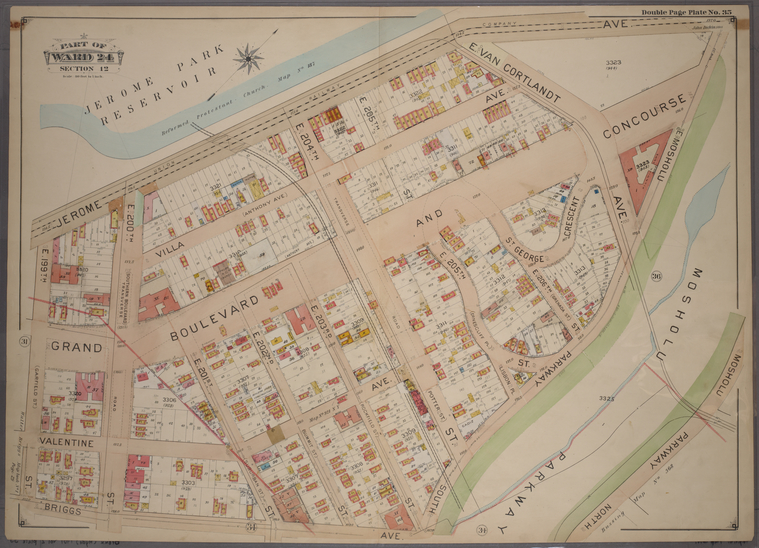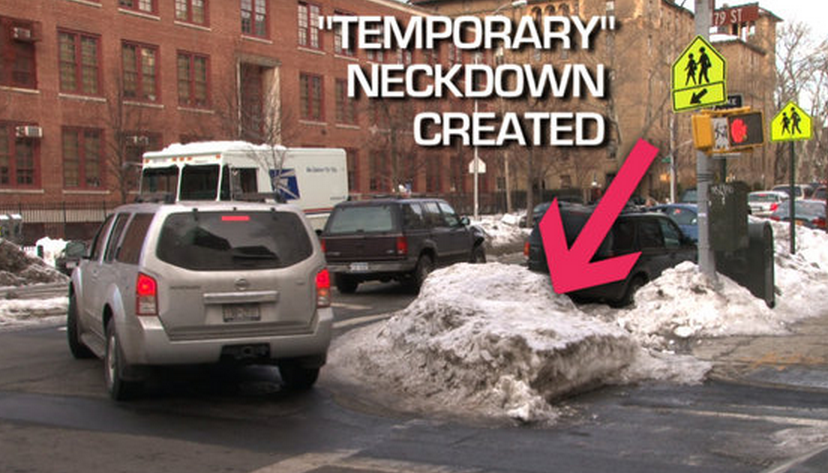On Mosholu Parkway, we have spent decades fighting the natural topography. It is time for us to surrender and create a new alliance with the storm water.
There was once a stream on Mosholu Parkway. It was the headwater of a waterway called Mill Brook, which ran down its own little vale parallel to the Bronx River in the vicinity of Webster Avenue until it emptied near the confluence of the Harlem and East Rivers.
 |
Double Page Plate No. 35, Part of Ward 24, Section 12.
[Bounded by Jerome Avenue, Mosholu Parkway North, Briggs Avenue a... (1901) |
From NYPL:
http://digitalgallery.nypl.org/nypldigital/dgkeysearchdetail.cfm?trg=1&strucID=847502&imageID=1533088&total=52&num=20&word=%22mosholu+parkway%22&s=1¬word&d&c&f&k=1&lWord&lField&sScope&sLevel&sLabel&imgs=20&pos=38&e=w
Mill Brook is long gone. At a point lost to historical memory, its full length was diverted into underground sewers. The motivation for this radical reengineering of the landscape is unclear; perhaps washing horse manure into an open stream created foul odors better diverted to the sewers. Whatever improvement was intended and perhaps achieved has now outlived its usefulness.
The stream feeds a combined sewer overflow, which results in raw sewage pouring into the waterways during heavy rains. Meanwhile, the topography on the parkway still drains toward the center. The water wants to carve out a stream bed. The result is muddy erosion in the lawns that dries into dustbowls.
 |
Rain water drains to the center of the parkway, where it erodes the lawn
in its attempt to restore its stream bed |
Instead of letting the rain wash out the landscape while we pollute the waterfront, we should redesign the parkway as a thriving ecosystem, a piece of vital green infrastructure. In addition to reducing the overflow of sewage, daylighting Mill Brook can create a more enjoyable landscape with better amenities. It would, in fact, restore the original vision for Mosholu Parkway:
"At comparatively small expense, the natural brook which Mosholu Parkway already possesses can be enlarged, increased in volume by the aid of an artesian well, carried quite through the centre of the tract, and there is a sufficient descent to the grade to allow of the construction of dams enlosing lakelets, the overflow of which might be made to form miniature cascades, spanned by rustic bridges. Such ornamental attractions are possible in the plan of this broad parkway, which possesses natural conditions that permit of a wide scope for the invention and fancy of the landscape architect."
The New Parks Beyond the Harlem, 1887
 |
As an example of the potential of daylighting Mill Brook on Mosholu Parkway,
the gully could include a waterfall similar to this one in Prospect Park |



